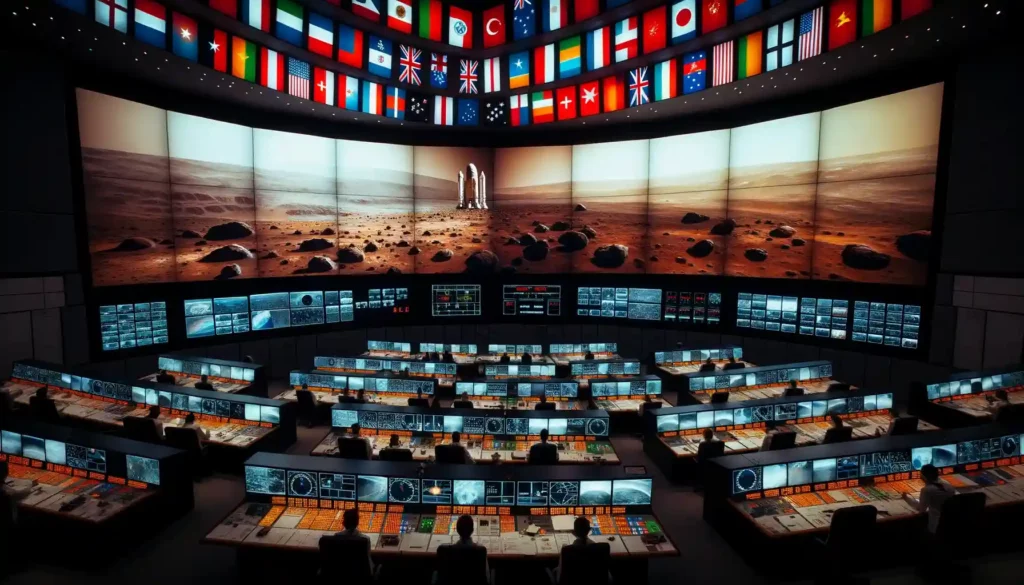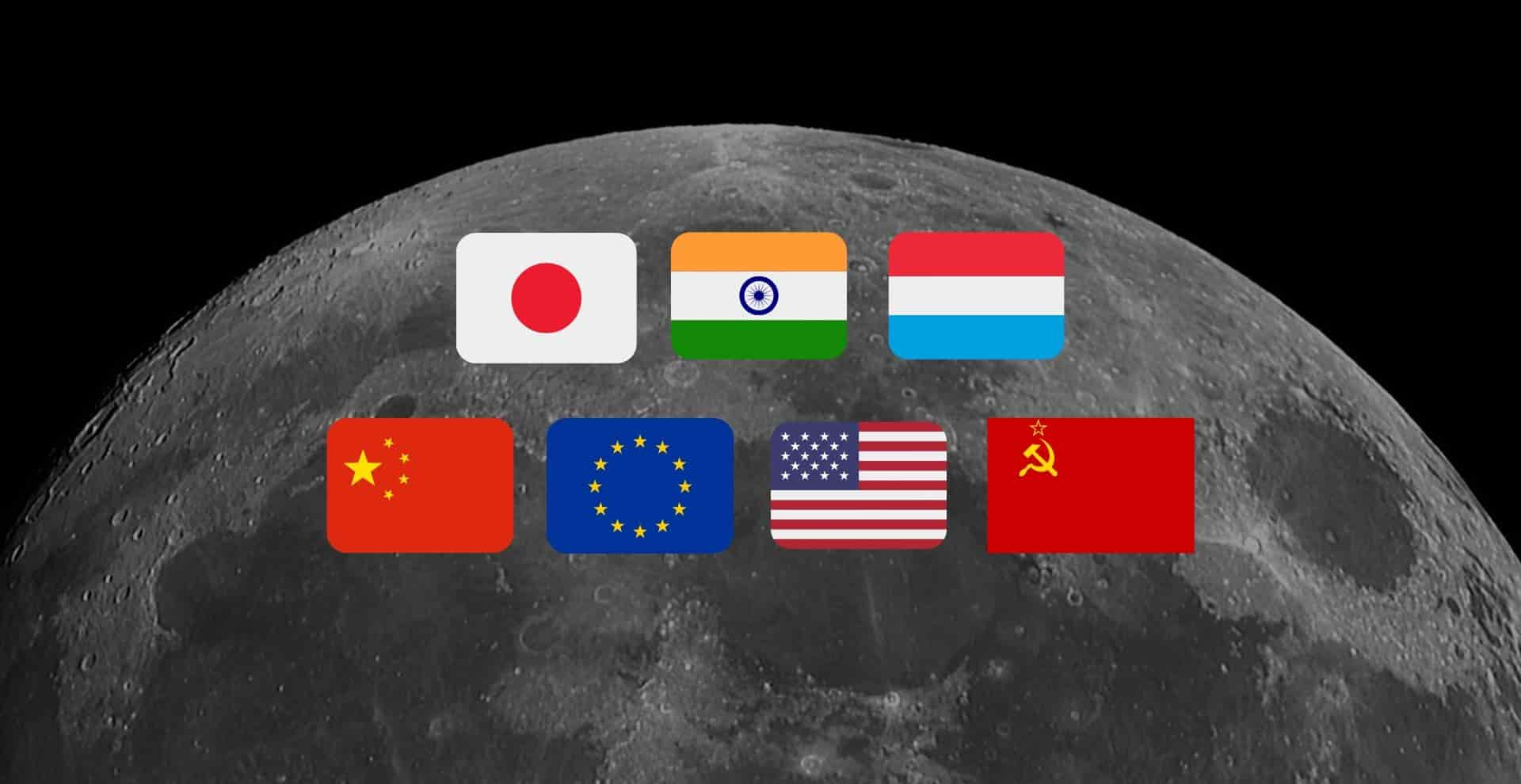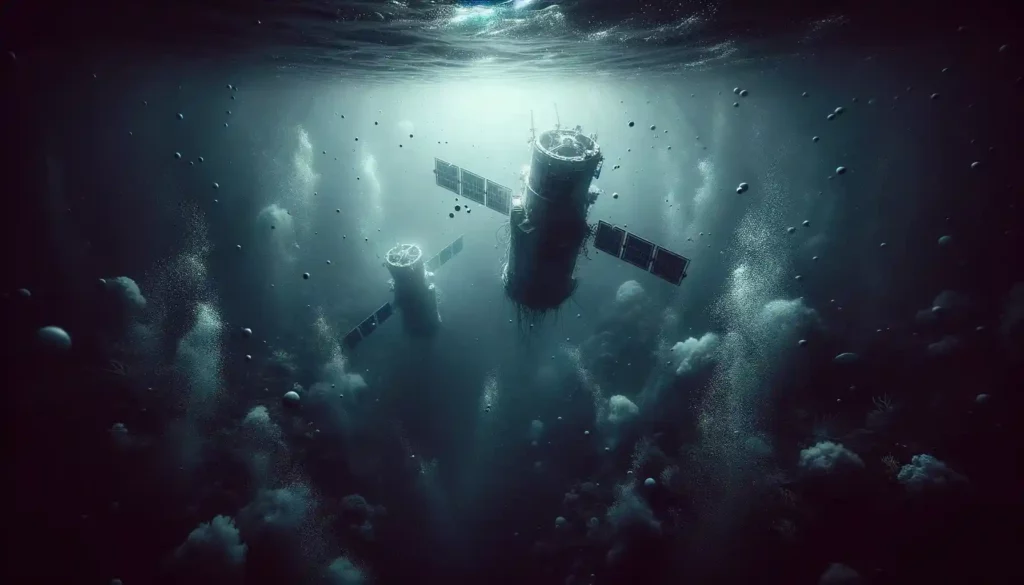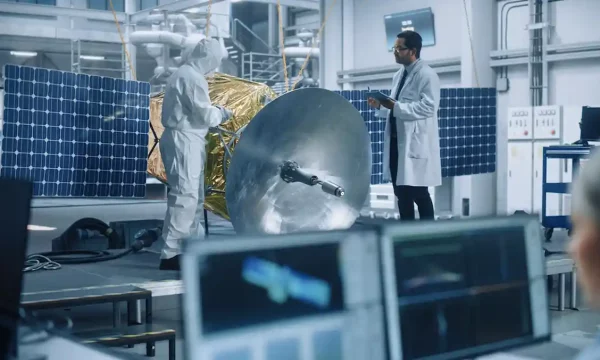
Beyond NASA: Countries You'd Never Expect in the Space Game
Last Updated: November 9, 2023
When we think of space exploration, NASA is typically the first agency to come to mind, but it’s not the only space agency in the world. In fact, you might be surprised to learn that there are over 70 space agencies on Earth, 16 of which have launch capabilities or are currently developing launch capabilities.
In today’s day and age of the privatization of space exploration with household names like SpaceX, it is important to establish is definition of the term space agency. For this article, we will be focused on governmental space agencies as opposed to private ones. In general, these are programs established by governments of countries or groupings of countries for advocating for and/or engaging in activities related to outer space, exploitation of space systems, and space exploration.
And again, while one or a few might come to mind, you might be surprised to hear that many, many countries have official space agencies.
Space Agencies With Launch Capabilities
Space agencies don’t have to do what we necessarily think of when we consider NASA. In fact, even NASA explores space in many ways that don’t often gain the attention of the general public. Therefore, while we may think of astronauts, the newest space telescope, or probes to other planets, many space agencies explore space in different ways such as through research and satellites in Earth’s orbit.
The following space agencies have developed or are in the process of developing launch infrastructure (i.e. launch sites, suborbital launch technology, orbital launch systems, and reusable hardware). Many of these collaborate on larger endeavors.
Algerian Space Agency (ASAL)
The Algerian Space Agency (ASAL) was established to harness the potential of space applications for socio-economic development and has achieved significant milestones towards this goal, including the launch of AlSat-1, Algeria’s first Earth observation satellite, which revolutionized agricultural monitoring and disaster management.
Other current endeavors include the development of AlComSat-1, which bolsters communication infrastructure, and AlSat-1B, which focuses on Earth observation. ASAL continues to propel Algeria in the space exploration endeavors of our time, on both a national and international level.

Comisión Nacional de Actividades Espaciales (CONAE)
The Argentinian Space Agency, known as Comisión Nacional de Actividades Espaciales (CONAE) was founded to drive advancements in space science and technology. Notable successes toward these goals include the launches of SAC-C, a pivotal Earth observation satellite aiding in environmental monitoring, and SAOCOM 1A, a radar satellite enhancing disaster management and agriculture.
In recent times, CONAE is focused on developing SAOCOM 1B and the highly anticipated SAOCOM Constellation, showcasing Argentina’s dedication to space research, remote sensing, and global collaboration for a sustainable future.
Australian Space Agency
The Australian Space Agency emerges as a pivotal player in the global aerospace arena, propelling Australia into the cosmos with remarkable achievements. Established to drive space innovation and collaboration, notable successes include the successful deployment of the Cubesat UVSQ-SAT, marking Australia’s entry into the space community, and the ongoing development of the innovative Earth observation project, NovaSAR-1.
With a vision for fostering international partnerships and advancing technological capabilities, the Australian Space Agency is poised to play a key role in the future of space exploration, research, and economic growth with both national and international impacts.
Agência Espacial Brasileira or AEB
The Brazilian Space Agency (Agência Espacial Brasileira or AEB) was founded to advance Brazil’s aerospace capabilities. Notable successes include the Amazonia-1 satellite, a significant step in Earth observation technology for monitoring deforestation and environmental changes.
AEB is actively involved in the development of the Amazonia-1B satellite, bolstering Earth monitoring capabilities, and the Cyclone Global Navigation Satellite System (CYGNSS), showcasing the country’s dedication to space research and its potential impact on climate monitoring and disaster management.
Canadian Space Agency (CSA)
The Canadian Space Agency (CSA) was established to advance Canada’s involvement in space science and technology. One of the most notable of their accomplishments is the iconic Canadarm, a robotic marvel pivotal in shuttle operations, and other contributions to the International Space Station (ISS), showcasing Canada’s expertise in space robotics and science experiments.
Currently, the CSA is focusing on Lunar Gateway contributions as part of its continued collaboration with NASA missions, leading in lunar exploration, and RADARSAT Constellation Mission for advanced Earth observation.
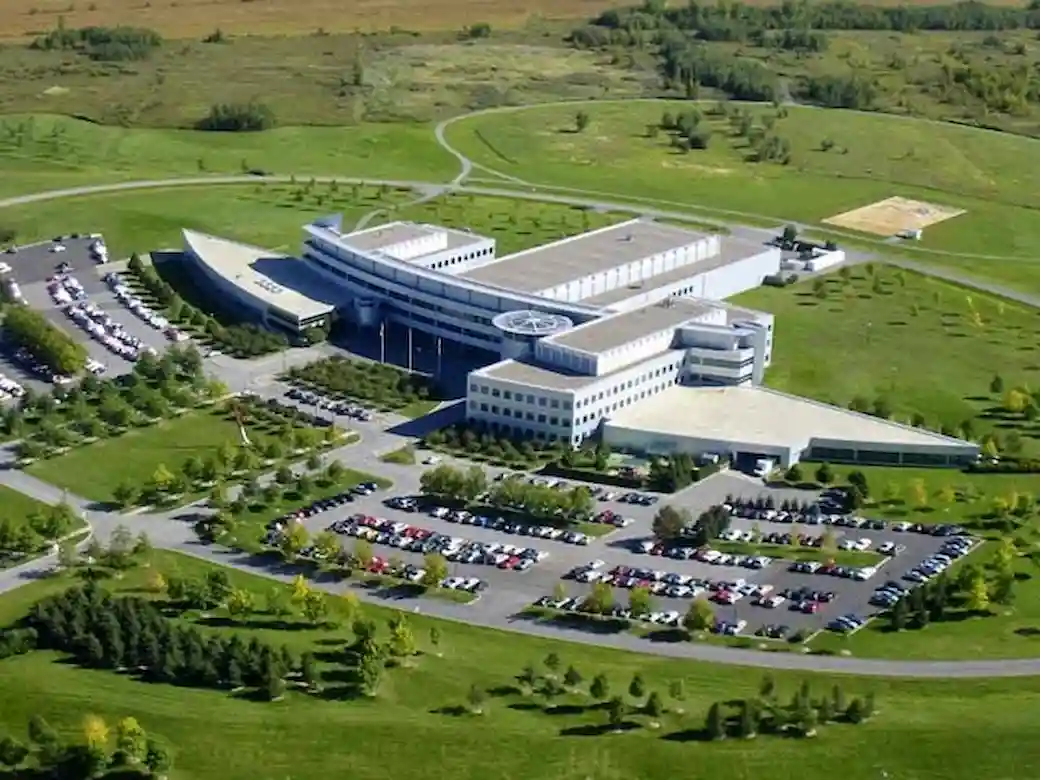
Agencia Chilena del Espacio or AChE
The Chilean Space Agency (Agencia Chilena del Espacio or AChE) was established to harness the potential of space for societal development and has become a burgeoning member in the international space community.
Noteworthy accomplishments include the development and launch of FASat-Alfa, Chile’s initial foray into Earth observation satellites, revolutionizing disaster management and environmental monitoring. Presently, AChE is engaged in advancing the Space Industry Development Program, bolstering the nation’s capabilities in space technology, and fostering international collaborations.
In fact, some of the most important science in the field of astronomy has been because of Chile’s contributions including tracking debris in the NASA DART asteroid mission.
China National Space Administration
The China National Space Administration (CNSA) stands as a symbol of China’s remarkable strides in space exploration and technology and is one of the major space agencies today.
Established with a vision for space exploration and global leadership in space, notable accomplishments include the successful missions of Chang’e lunar exploration probes, securing China’s position in lunar exploration, and the Tiangong space station, showcasing its expertise in long-term human spaceflight.
CNSA recently made history with its Mars rover mission Tianwen-1, making it the second nation to land a rover on the Red Planet.
European Space Agency (ESA)
The European Space Agency (ESA) unites nations across Europe in a shared vision of cosmic discovery. Established to drive technological advancement and scientific innovation, ESA has achieved significant milestones and often partners with NASA for space exploration, including work on the Hubble Space Telescope, transforming our understanding of the universe, and the Mars Express mission, uncovering secrets of the Red Planet.
ESA is spearheading the Galileo satellite navigation system and again partnering with NASA on the continued operation of the James Webb Space Telescope, reaffirming its commitment to unraveling the cosmos and propelling humanity into a future of scientific wonder and interplanetary discovery.
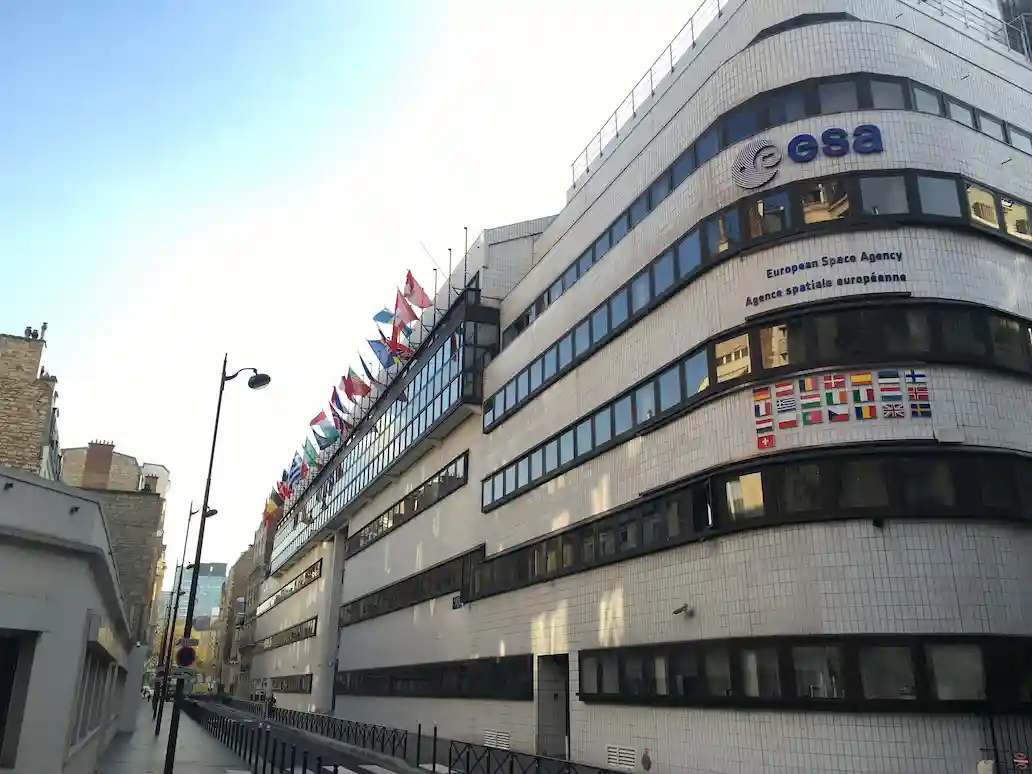
Centre National d’Études Spatiales or CNES
The French National Centre for Space Studies (Centre National d’Études Spatiales or CNES) epitomizes France’s expertise in space exploration and technological innovation.
Established to propel the nation into the cosmos, CNES has achieved remarkable milestones including the development of the Ariane launch vehicle, as part of its partnership with ESA, and contributions to Earth observation satellites, advancing environmental monitoring and resource management.
Currently, CNES is actively engaged in projects like the Taranis mission to study high-altitude atmospheric phenomena and the exploration of Mars through the ExoMars mission, showcasing France’s dedication to cutting-edge space research and international collaboration.
Indian Space Research Organisation (ISRO)
The Indian Space Research Organisation (ISRO) was established with a vision to harness space technology for national development, including the Mars Orbiter Mission (Mangalyaan), a historic feat marking India’s entry into interplanetary exploration, and the Chandrayaan missions, significantly advancing lunar research.
On 23 August 2023, India became the first nation to successfully land a spacecraft near the lunar south pole with Chandrayaan-3 (its first soft landing on an extraterrestrial body). ISRO’s trajectory promises a future of cutting-edge space endeavors and scientific breakthroughs, continuing its placement as one of the major space agencies in the world.
Iranian Space Agency
The Iranian Space Agency (ISA) was established to propel the nation’s presence in space and notable successes include the launch of Omid, Iran’s first domestically produced satellite, demonstrating Iran’s entry into the space race.
Moreover, the successful launch of the Navid satellite showcased advancements in Earth observation capabilities. Currently, ISA is actively pursuing projects such as the development of the Pars-1 satellite and the Simorgh rocket, marking Iran’s determination to further space research and technology, bolstering its position in the global aerospace arena.
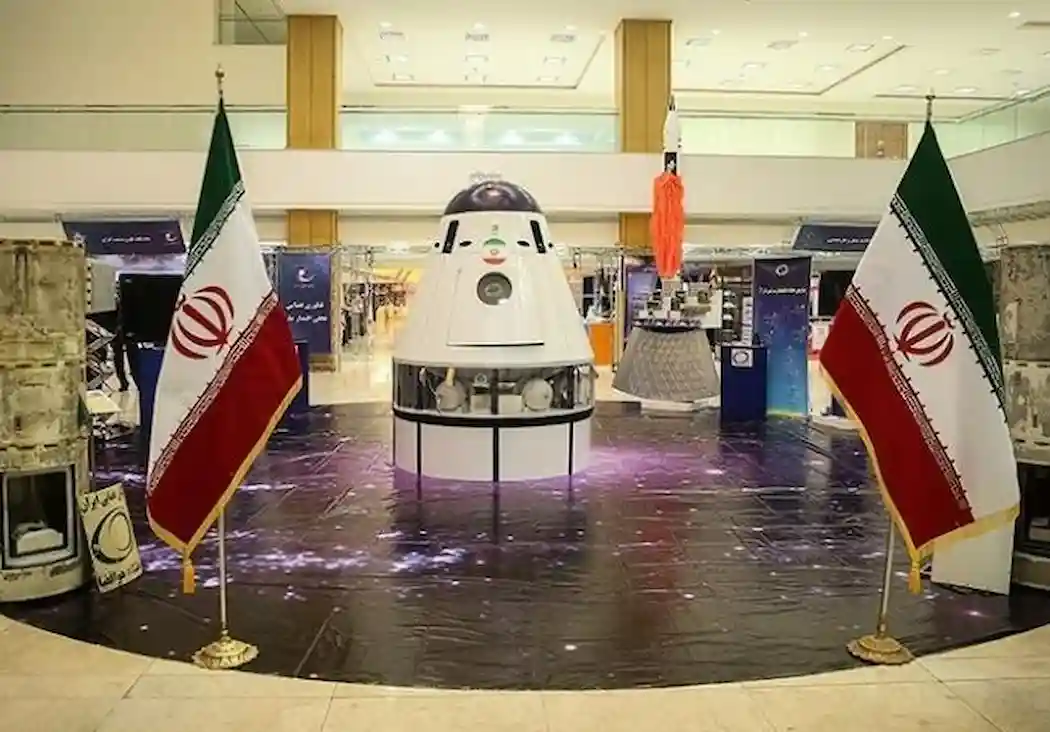
Israeli Space Agency (ISA)
The Israeli Space Agency (ISA) was founded to drive advancements in space technology and research. The Beresheet mission, Israel’s first lunar lander, reflects the nation’s capability to venture into lunar exploration.
Additionally, ISA has showcased expertise in Earth observation with satellites like Venus and TecSAR. Currently, ISA is focused on projects, such as the Amal mission to Mars, highlighting Israel’s ambitions in planetary exploration and commitment to pushing the boundaries of space science and technology.
Agenzia Spaziale Italiana
The Italian Space Agency (Agenzia Spaziale Italiana or ASI) was established to drive innovation and foster international collaboration including contributions to the International Space Station (ISS) and the Hubble Space Telescope.
Moreover, ASI has made strides in Earth observation with the COSMO-SkyMed constellation, enhancing disaster management and environmental monitoring. Currently, ASI is actively engaged in endeavors looking toward planetary exploration, such as its joint missions with ESA, including the Mars rover mission ExoMars.
Japan Aerospace Exploration Agency
The Japan Aerospace Exploration Agency (JAXA) was founded to advance scientific research and technology in the field of aerospace, including the Hayabusa missions, demonstrating asteroid sample return capabilities, and the development of the Kibo laboratory module on the International Space Station (ISS), showcasing Japan’s significant contribution to human space exploration.
Presently, JAXA is actively involved in international partnership projects such as the Artemis program with NASA, affirming Japan’s commitment to furthering lunar exploration and expanding the boundaries of space exploration.
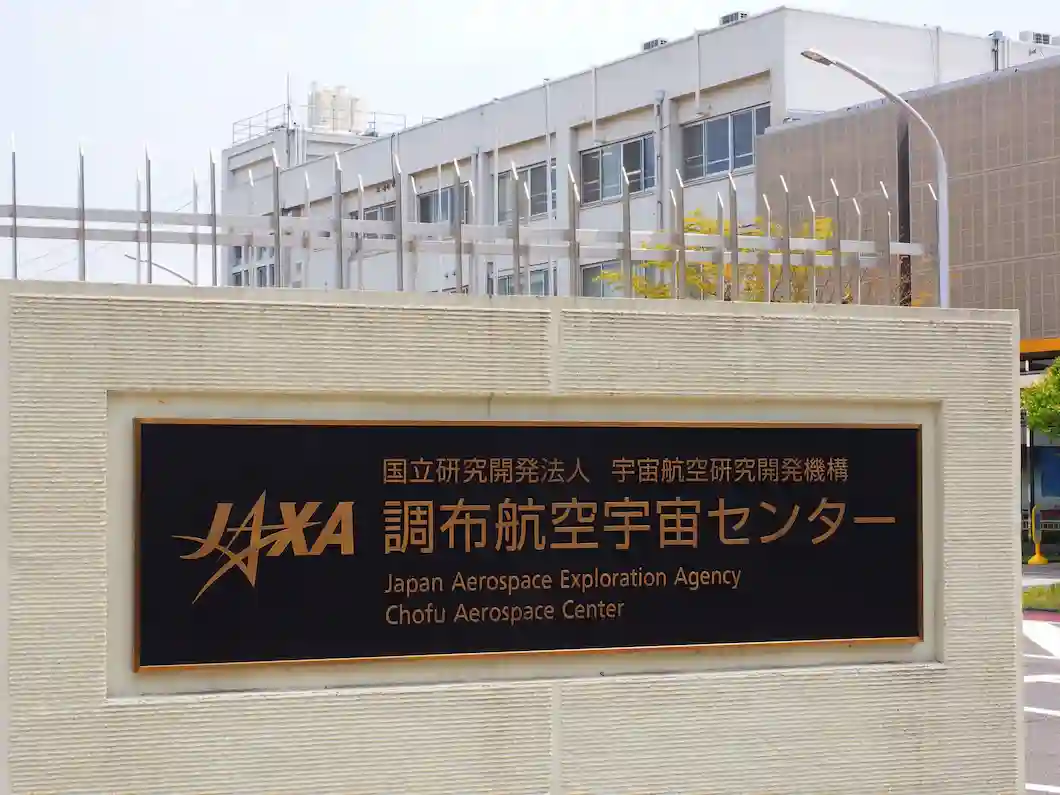
North Korean National Aerospace Development Administration
The North Korean National Aerospace Development Administration (NADA) represents North Korea’s aspirations in the realm of space exploration. NADA has made notable achievements, including the successful launch of multiple satellites like Kwangmyongsong-4 and Kwangmyongsong-5, aimed at enhancing satellite communication and Earth observation capabilities.
Additionally, the successful test of the Hwasong-15 intercontinental ballistic missile underlines their ambitions in space and defense technology. While details regarding North Korea can be difficult to verify, NADA continues to develop its space capabilities with an ongoing focus on advancing satellite technology and enhancing its presence in the aerospace arena.
Korea Aerospace Research Institute
The Korea Aerospace Research Institute (KARI) stands at the forefront of South Korea’s space exploration endeavors, embodying the nation’s commitment to advancing aerospace technology.
Notable accomplishments include the successful launch of various satellites, such as the KOMPSAT series, bolstering Earth observation capabilities and satellite-based applications. Currently, KARI is actively involved in ambitious projects like the NURI rocket development and the KSLV-II rocket program, exemplifying South Korea’s dedication to advancing its space capabilities and becoming a larger player in the aerospace community.
Agencia Espacial Mexicana
The Mexican Space Agency (Agencia Espacial Mexicana or AEM) embodies Mexico’s aspirations for space exploration and technological progress. A significant achievement includes the launch of the AztechSat-1, Mexico’s first nanosatellite developed by students.
Additionally, AEM has initiated collaborations with international space agencies and organizations on various projects. Presently, AEM is actively engaged in a variety of projects such as the development of nanosatellites for Earth observation.
New Zealand Space Agency
The New Zealand Space Agency was established to facilitate the country’s participation in the global space community and has swiftly gained prominence. Key achievements include the Electron rocket developed by Rocket Lab, a private space company based in New Zealand, enabling small satellite launches at an unprecedented frequency.
Currently, the New Zealand Space Agency is actively involved in fostering the space industry within the country, enhancing regulatory frameworks, and promoting research and development to position New Zealand as a competitive player in the global space sector.
Pakistan Space and Upper Atmosphere Research Commission
The Pakistan Space and Upper Atmosphere Research Commission (SUPARCO) stands as a testament to Pakistan’s dedication to space exploration and technological innovation.
SUPARCO has made significant strides with notable achievements including the development and launch of various satellites, such as the Remote Sensing Satellite (PRSS-1) and the Communication Satellite (PakSat-MM1), enhancing national communication and Earth observation.
Presently, SUPARCO is actively engaged in projects like the PakTES-1A, focusing on scientific research and development.
Polish Space Agency
The Polish Space Agency (POLSA) epitomizes Poland’s aspirations in the arena of space exploration and technological advancement. Noteworthy successes include the involvement in the European Space Agency (ESA) and the Copernicus program, contributing to Earth observation and environmental monitoring.
Additionally, POLSA plays a vital role in advancing Poland’s capabilities in satellite technology. Presently, POLSA is actively engaged in ongoing projects like the development of the BRITE-PL constellation and collaboration with ESA.
State Corporation for Space Activities “Roscosmos”
The State Corporation for Space Activities “Roscosmos” (ROSCOSMOS) is the cornerstone of Russia’s rich space legacy and contemporary space exploration pursuits. Renowned for its pioneering achievements, including the launch of the first artificial satellite, Sputnik 1, and the first human, Yuri Gagarin, into space while under the Soviet Union, ROSCOSMOS has shaped the course of space exploration.
Presently, ROSCOSMOS is actively involved in ambitious projects such as continuing to serve on and maintain the International Space Station (ISS), lunar exploration initiatives like Luna-Glob, and the development of the next-generation crewed spacecraft, Federation.
With a rich history and a future-oriented vision, ROSCOSMOS remains a global leader in space exploration and technology.
Swedish National Space Agency
The Swedish National Space Agency (SNSA) was established to advance the nation’s space capabilities and epitomizes Sweden’s commitment to space exploration and cutting-edge technology.
Key successes include the collaboration with the European Space Agency (ESA) and the successful launch of the PRISMA satellite, enhancing Earth observation. SNSA actively engages in projects like the development of small satellite platforms and the contribution to various ESA missions.
State Space Agency of Ukraine
The State Space Agency of Ukraine (SSAU) stands as a testament to Ukraine’s pioneering efforts and accomplishments in the field of space exploration. Notable successes include the design and manufacture of key components for the International Space Station (ISS) and collaboration on various scientific projects within the framework of international space programs.
Presently, SSAU is actively engaged in promising projects such as the Cyclone-4 launch vehicle and Lybid-1 communication satellite, showcasing Ukraine’s commitment to space research, satellite technology, and its contributions to the international aerospace community.
United Kingdom Space Agency
The United Kingdom Space Agency (UKSA) embodies the UK’s reinvigorated commitment to space exploration and technological advancement. Noteworthy achievements include the Beagle 2 Mars lander as part of the ESA Mars Express program and the development of numerous small satellites, showcasing the UK’s expertise in space technology.
Presently, UKSA is actively engaged in ambitious projects such as the NovaSAR-1 Earth observation satellite and the upcoming OneWeb satellite constellation, demonstrating the UK’s dedication to fostering space capabilities, advancing scientific research, and propelling the nation into a prominent position within the global space community through its international collaborations.
National Aeronautics and Space Administration
NASA, the National Aeronautics and Space Administration was established in 1958, and has consistently achieved extraordinary milestones, including landing humans on the moon during the Apollo missions and launching numerous space probes to explore our solar system and beyond.
Pioneering accomplishments like the Hubble Space Telescope and the Mars rovers have significantly advanced our understanding of the cosmos. Currently, NASA is focused on future initiatives like the Artemis program, aiming to return humans to the moon and pave the way for crewed missions to Mars.
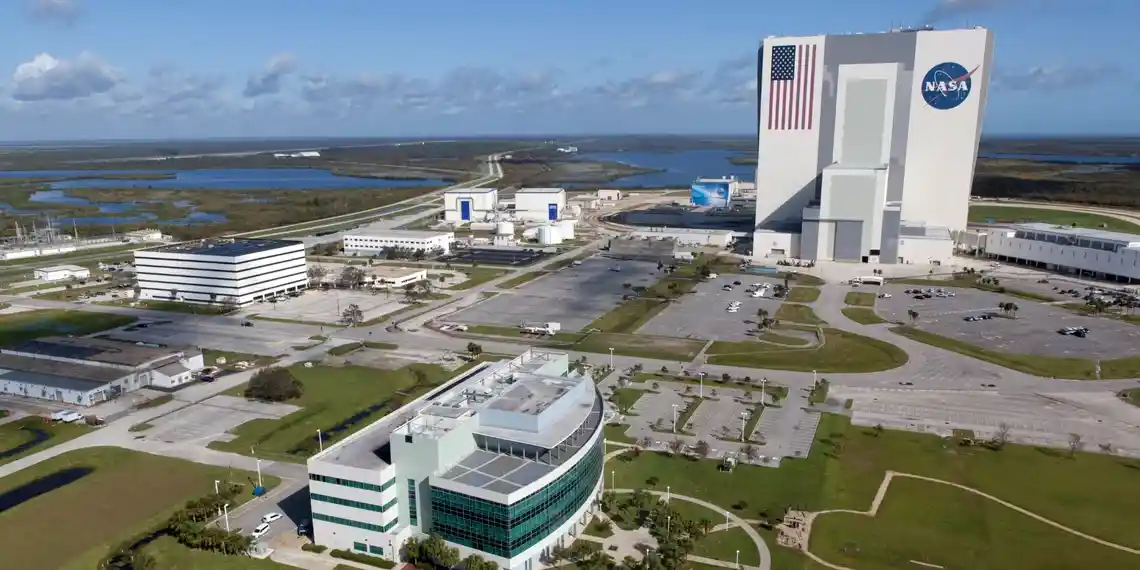
Space Agencies Without Launch Capabilities
However, these are not the only space agencies in the world. The following space agencies do not have launch capabilities, but all contribute to helping broaden our understanding of space in various ways.
| Space Agency Name | Country | Founded | Astronauts | Satellites |
| Austrian Space Agency (ALR) | Austria | 12 Jul 1972 | 1 – Franz Viehböck | X |
| Space Agency of the Republic of Azerbaijan (Azercosmos) | Azerbaijan | 2021 | Operate | |
| Bangladesh Space Research and Remote Sensing Organization (SPARRSO) | Bangladesh | 1980 | Operate | |
| Belgian Institute for Space Aeronomy (BISA/ BIRA/ IASB) | Belgium | Nov 25, 1964 | 1 – Dirk Frimout | X |
| Bulgarian Space Agency (SRI-BAS/ STIL-BAS) | Bulgaria | 1987 | 1 – Georgi Ivanov | Operate |
| Costa Rican Space Agency (Agencia Espacial Costarricense/ AEC) | Costa Rica | 2021 | Build and Operate | |
| Consultative Committee for Space Data Systems | Inernational committee | 1982 | ||
| Committee on Space Research | International committee | 1958 | ||
| Czech Space Office (CSO) | Czech Republic | 2003 | Yes, including Vladimír Remek | X |
| Danish National Space Center (DNSC) | Denmark | 1 Jan 2005 (as DNSC; 1968 as DSRI) | Yes, including Andreas Mogensen | Operate |
| Egyptian Space Agency (EGSA) | Egypt | 2018 (as EGSA; 1994 as NARSS; 1971 as EASRT-RSC) | Operate | |
| Instituto Aeroespacial de El Salvador (ESAI) | El Salvador | 2021 | X | X |
| European Union Agency for the Space Programme (EUSPA) | European Union | 21 May 2021 (as EUSPA; 2004 as GSA) | ||
| German Aerospace Center (DLR) | Germany | 1969 | Yes | Build and Operate |
Hellenic Space Centre Ελληνικό Κέντρο Διαστήματος (HSC) | Greece | 9 Aug 2019 | X | Operate |
| Hungarian Space Office (HSO/ MŰI) | Hungary | Jan 1992 | X | Operate |
| Indonesian Space Agency (INASA) | Indonesia | Nov 27, 1964 (Previously known as LAPAN) | Yes | Build and Operate |
| National Space Agency of the Republic of Kazakhstan (KazCosmos/ KazKosmos) | Kazakhstan | 27 Mar 2007 | Yes | Operate |
| Lithuanian Space Association (LSA) | Lithuania | 2007 | X | Operate |
| Luxembourg Space Agency (LSA) | Luxembourg | Sep 2018 | X | X |
| Malaysian Space Agency (MYSA) | Malaysia | 2002 | Yes | Operate |
| National Remote Sensing Center of Mongolia (NRSC) | Mongolia | 1991 | No | Build and Operate |
Royal Center for Remote Sensing/ Centre Royal de Télédétection Spatiale Ammas Amrrukan n Tallunt (CRTS) | Morocco | Dec 1989 | No | X |
| National Space Research and Development Agency (NASRDA) | Nigeria | 1998 | X | Operate |
| Netherlands Institute for Space Research (SRON) | Netherlands | 1983 | Yes | Build and Operate |
| Norwegian Space Agency (NRS/ NSC) | Norway | 1987 | X | Operate |
| Paraguayan Space Agency (Agencia Espacial de Paraguay/ AEP) | Paraguay | 26 Mar 2014 | X | Operate |
| National Commission for Aerospace Research and Development (CONIDA) | Peru | 11 Jun 1974 | X | Build and Operate |
| Philippine Space Agency (PhilSA) | Philippines | 8 August 2019 (as PhilSA; 2014 as DOST-ASTI) | X | Operate |
| Portugal Space (PTSPACE) | Portugal | 2019 | X | Build |
| Romanian Space Agency (ASR/ ROSA) | Romania | 1991 | Yes | Operate |
| Rwanda Space Agency (RSA) | Rwanda | 2021 | X | X |
| Saudi Space Commission (SSC) | Saudi Arabia | 2018 (as SSC; 1977 as KACST-SRI) | X | Operate |
| Centre for Remote Imaging, Sensing and Processing (CRISP) | Singapore | 1995 | X | Operate |
| South African National Space Agency (SANSA) | South Africa | 9 Dec 2010 | X | X |
| Agencia Espacial Española (AEE) | Spain | 2023 | Yes | Build and Operate |
| Swiss Space Office (SSO) | Switzerland | 1998 | X | X |
| Syrian Space Agency (SSA) | Syria | 18 Mar 2014 | X | X |
| Taiwan Space Agency (TASA) | Taiwan | 3 Oct 1991 | X | Build and Operate |
| Geo-Informatics and Space Technology Development Agency (GISTDA) | Thailand | 3 Nov 2002 | X | Operate |
| National Remote Sensing Center of Tunisia (CNCT) | Tunisia | 1988 | X | X |
Turkish Space Agency (Türkiye Uzay Ajansı/ TUA) | Turkey | 13 Dec 2018 (as TUA; 1985 as TÜBİTAK UZAY) | X | Build and Operate |
| Turkmenistan National Space Agency (TNSA) | Turkmenistan | 2011 | X | Operate |
| United Arab Emirates Space Agency (UAESA) | United Arab Emirates | 2014 | Yes | Operate |
| United Nations (various offices and committees on space) | X | X | ||
| The Space Research and Technology Agency of the Republic of Uzbekistan (Uzbekspace agency) | Uzbekistan | 2019 | X | X |
| Bolivarian Agency for Space Activities (ABAE) | Venezuela | 1 Jan 2008 | X | Operate |
| Vietnam National Space Center (TTVTVN or VNSC) | Vietnam | 20 Nov 2006 | Yes | Operate |
Conclusion
Much of the world is studying space, to the degree that over 70 countries have official government space agencies. While over twenty of these have or are working on launch capabilities, the others all contribute to our understanding of the universe in various research opportunities and educational outreach.
Who knows what will be discovered next thanks to their work?

Sarah Hoffschwelle is a freelance writer who covers a combination of topics including astronomy, general science and STEM, self-development, art, and societal commentary. In the past, Sarah worked in educational nonprofits providing free-choice learning experiences for audiences ages 2-99. As a lifelong space nerd, she loves sharing the universe with others through her words. She currently writes on Medium at https://medium.com/@sarah-marie and authors self-help and children’s books.
Wow! There's more to read 🚀
This page is part of our collection of astronomy articles. If you enjoyed the read, then you’ll love the following articles.
